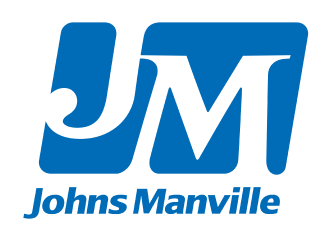Johns Manville
Johns Manville used asbestos in its products and hid its dangers, leading to mesothelioma lawsuits. Founded in 1858, the company declared bankruptcy in 1982 and created a $2.5 billion asbestos trust fund in 1988 to compensate people with mesothelioma and other asbestos-related diseases.

Johns Manville’s Connection to Asbestos
Although Johns Manville was created more than 160 years ago, the company’s use of asbestos continues to be felt today. Making asbestos products, including fire-resistant roofing, insulation and floor tiles, the company exposed millions of workers to dangerous asbestos fibers.
Johns Manville was once the world’s biggest maker of asbestos products. Asbestos exposure caused thousands of workers to develop mesothelioma and other serious asbestos-related diseases.
Johns Manville’s Top Asbestos-Containing Products
- 352 Insulating Cement
- Asbestoguard Adhesives
- Colorbestos Siding Sheets
- Fibrocel Insulation
- Flexstone Asbestos Roofs
- Insulkote Weatherproofing
- Johns Manville Colorbestos Shingles
- Thermobestos Block Insulation
Johns Manville went bankrupt facing thousands of asbestos lawsuits. The company set up the Manville Personal Injury Settlement Trust to compensate people who got sick from asbestos exposure.
Old mining and factory work at a Johns Manville Superfund site in Illinois is still causing problems today. In June 2022, an Environmental Law & Policy Center report warned climate change flooding could spread asbestos from the site into neighborhoods near Lake Michigan, putting more people at risk.
Who Was at Risk of Asbestos Exposure from Johns Manville?
Many jobs at Johns Manville, especially mining and factory work, were highly risky for asbestos exposure. Shipping raw asbestos across the country and to other countries also spread the danger to even more people.
Workers were often covered in asbestos dust at the end of their shifts. When they left work, they carried the dust on their clothes, boots and gear home, putting their loved ones at risk of secondary exposure and mesothelioma.
Higher-Risk Jobs for Asbestos Exposure at Johns Manville
- Carpenters
- Construction workers
- Electricians
- Factory workers
- Industrial plant workers
- Miners
- Painters
- Pipefitters
- Roofers
- Textile workers
The company was aware of the dangers of asbestos as early as 1933 when Dr. Anthony Lanza told Johns Manville officials about the health risks. However, Lanza, the medical director for Metropolitan Life Insurance Company, advised them not to warn workers.
Only 16 years later in 1949, Dr. Kenneth Smith told the company that 7 workers’ chest X-rays showed signs of asbestosis. The company’s president chose not to share the results, making it a company policy to keep workers in the dark. Reports showed 20% of workers had signs of asbestosis, but Metropolitan Life discouraged government inspections.

Get help paying for treatment and other expenses by accessing trust funds, grants and other options.
Access Funds NowMesothelioma Lawsuits Involving Johns Manville
Between its first official complaint in 1929 that settled for $30,000 to $90.5 million in wrongful death verdicts to 11 families, Johns Manville spent millions in litigation over asbestos cancer. The company was also part of some historic asbestos lawsuits.
After years of legal action, including the U.S. Supreme Court declining to hear an appeal, the Fifth Circuit Court of Appeals’ 1973 ruling in favor of industrial insulation worker Clarence Borel’s widow stood. Johns Manville was one of 11 companies named in the historic mesothelioma lawsuit. The court stated the core issue was the defendant manufacturers’ failure to warn Borel about the dangers of working with asbestos-containing products.
During WWII, workers at Consolidated Steel Shipyard who developed mesothelioma and other asbestos-related diseases filed lawsuits against Johns Manville over asbestos insulation. Johns Manville claimed it didn’t know asbestos was dangerous in the 1940s. But company records showed they knew the decade before.
Johns Manville Asbestos Trust Funds
Johns Manville formed an asbestos trust fund as part of its bankruptcy proceedings to handle future claims from those with mesothelioma or other asbestos-related illnesses. The Manville Personal Injury Settlement Trust was approved in 1988 and was initially funded with $2.5 billion.
When the company set up the trust in 1988, it only expected about 100,000 claims. However, it quickly received hundreds of thousands. Johns Manville then added another $520 million more and changed how claims were handled. Currently, it pays about 5.1% of what a claim is originally worth. Reportedly, the trust still had more than $600 million as of 2023, which is the latest information available.
People who file a claim with the trust may receive between $600 and $350,000 in compensation. Medical costs can affect your payout amount. To qualify for compensation, you must have a confirmed diagnosis of an asbestos-related illness and show Johns Manville was responsible for your asbestos exposure. Family members can also file claims if their loved one has died.
Legal Help for People Exposed to Johns Manville’s Asbestos
An experienced asbestos lawyer can help you file a claim with the Manville Personal Injury Settlement Trust whether you’ve received a diagnosis or lost a loved one to mesothelioma or another asbestos-related disease. They’ll ensure you have all of the documentation needed and your claim is filed properly.
If you have questions about finding the right mesothelioma lawyer to help you file your asbestos trust fund claim, filing VA-claims in addition to a trust claim or other financial assistance opportunities, our Patient Advocates can help. The team at The Mesothelioma Center is available 24 hours, 7 days a week to help you and your family. They can also connect you with top doctors and support groups, as well as schedule medical appointments for you and help you navigate insurance. All their help and resources are free.
Recommended Reading


